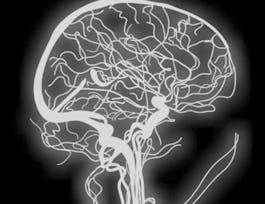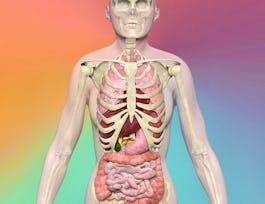Course 3 explores the perceptual capacities and limitations of humans and computers. It discusses various types of visual, auditory, and tactile displays and how they can be used to create effective interfaces.



The Limits of Human Perception
This course is part of Human Factors & Usability Engineering: Designing for Humans Specialization

Instructor: Robert Gray
Sponsored by BrightStar Care
Recommended experience
What you'll learn
You will be able to compare and contrast different types of perceptual displays and understand the trade-offs in designing effective interfaces.
Details to know

Add to your LinkedIn profile
5 assignments
See how employees at top companies are mastering in-demand skills

Build your subject-matter expertise
- Learn new concepts from industry experts
- Gain a foundational understanding of a subject or tool
- Develop job-relevant skills with hands-on projects
- Earn a shareable career certificate


Earn a career certificate
Add this credential to your LinkedIn profile, resume, or CV
Share it on social media and in your performance review

There are 5 modules in this course
In Course 3, we will focus on perceptual capacities and limitations. You will explore the basic functions of vision, including static and dynamic visual acuity, depth perception, peripheral vision, and stereoacuity. Additionally, you will compare and contrast different types of visual displays to understand their impact on user experience. The course will also cover the fundamental functions of the human auditory and somatosensory systems, providing insights into how we perceive sound and touch. You will examine various types of auditory and tactile displays and their implications for designing effective interfaces.
What's included
1 video1 reading
Understanding how human vision works is crucial in designing effective user interfaces and optimizing user experiences. In this module, we will also examine important aspects of vision such as acuity, brightness, color, and glare. Furthermore, we will study the role of eye movements in visual perception, as well as depth perception and motion processing.
What's included
3 videos4 readings1 assignment
Module 2 of this course explores the principles and considerations involved in designing effective visual displays. It delves into the concepts of object perception, visual design principles, and the role of affordances in design.
What's included
3 videos5 readings1 assignment1 discussion prompt
Module 3 focuses on the topic of the human auditory system. It explores the anatomy and functions of the auditory system, the properties of sound waves, and the perception of complex sounds. Additionally, it delves into the sense of touch, the receptors involved, and the perception of different tactile qualities.
What's included
3 videos5 readings2 assignments
Module 4 of this course explores the importance and applications of using modalities other than vision in interface design. It delves into the benefits of auditory and tactile displays and how they can enhance user experience and safety.
What's included
3 videos8 readings1 assignment
Instructor

Offered by
Why people choose Coursera for their career




Recommended if you're interested in Physical Science and Engineering

Johns Hopkins University

Universidad de Palermo

University of Glasgow

Epic Games

Open new doors with Coursera Plus
Unlimited access to 10,000+ world-class courses, hands-on projects, and job-ready certificate programs - all included in your subscription
Advance your career with an online degree
Earn a degree from world-class universities - 100% online
Join over 3,400 global companies that choose Coursera for Business
Upskill your employees to excel in the digital economy


